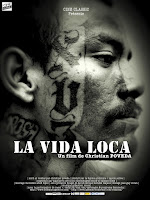The Red Shoes - The Autopoietic
Thoughts On: The Red Shoes (1948)
Made by Powell and Pressburger, this is the Monacan film of the series.
This is a film I have snuck into the World Cinema Series via Monaco as this is one of the most renowned films to have featured Hotel du Paris in Monte Carlo, Monaco as a filming location (famously featured in Golden Eye also). A blessing to the eyes, this glistening technicolour production oozes with the beauty of old cinema, its texture and rich colours, the gleaming lights and palpable sets. Powell and Pressburger's astonishing expressionism could not have been better framed. Though in many ways a petty and rather frivolous drama, The Red Shoes is uplifted to classical magic with its famed ballet sequence. It was a treat to have forgotten and been lost in it again on this re-watch. It injects immense technical class and detail into this classic whilst asserting a rather ominous and strange narrative subtext.
As said, The Red Shoes, dramatically speaking, is quite plainly petty and frivolous. Without grit or particular emotion, no pressing investigation into character and psychology, this narrative simply sees a young ballet dance suicide herself out of a love triangle; one that symbolises a life as a great dancer, and a life as a wife who was a dancer. The choice kills her; her intention to dance alone being that which lasts. There's perhaps a certain poetry and tragedy concerning this. Alas, a film such as Black Swan is one that successfully handles and represents the psychology and emotion of this narrative. The Red Shoes is not successful here. Instead its success is more subtle, yet also in the title.
The Red Shoes is not a tragedy, per se. At least not in my opinion. It is rather a tragic creation, however. A tragedy is defined by suffering in some form, and though this is an element of the narrative, it does not motivate the drama. The Red Shoes is a fairy tale, as we are told, and as a consequence of the origination of the film and ballet in the Danish fairy tale. Fairy tales are more mystic and educational in nature than tragedies, therefore less concerned with the evocation of emotion (via suffering). Such begins to illuminate the structure and approach to character witnessed in The Red Shoes. This is not a film that cares particularly for its love story and the faces of its personas; it is far more concerned with their actions around an object; the red shoes something like a mystic sword, ring or jewel. Such outlines exactly why the dance sequence is the centrepiece of the film and narrative. At its surface, The Red Shoes is concerned with the artist/art dialectic that anyone interested in the psychology of their own creation can become lost in. But, beyond this facade, are the red shoes, and a story about human nature encountering an autopoietic entity.
An autopoietic entity is a self-contained and self-running system; something like a cell. In narrative, these are often the aforementioned mystic objects; the sword from Sword in the Stone, the ring from Lord of the Rings, the glass shoes of Cinderella. These are entities that themselves contain a story. Such is true of the red shoes that drive the drama. We are told their story plain; those who wear them will dance themselves to death. The revealing hint that we are given in dialogue is that these shoes (like most other mystic objects of its class) are in opposition to, or can at least overpower, human nature itself; the intention of the director and mastermind of the ballet. This is why The Red Shoes is a love story. It is the main character's nature to fall in love, yet her shoes have already decided her story. This is why she must die in them. Autopoietic entities destroy human nature, for the human is autopoietic itself and there is only one life force within the soul that can be submitted to such a system. To encounter and engage an autopoietic entity is to give your soul to it; your body transforms into vessel, like the body of the dancer becomes an instrument for applause and adoration. And such is the basic tale of The Red Shoes. It is a warning of the existence of objects whose will is greater than yours and which you can lose your soul or life force to. Human nature comes with its own story, but the human may will to give their soul to another autopoiesis, or autopoietic entity, to alter their story. The Red Shoes is therefore a tale urging one to understand not only their own story in life, but the story of the objects and entities we consider giving our soul, therefore the rights to our story, to. Stories and even whole lives wait, ready to spring upon us, in a great many objects and opportunities: potential lovers, new jobs, valuable possessions, etc. Be most cautious of those objects and opportunities with known and defined stories; study them well, for you will belong to them long before they belong to you. The only way to retrieve your soul from an object you give it to is to die after all; symbolically or perhaps literally in more dire circumstances. Know that you are deciding your death, not just your story, in the autopoietic.
My last question is then: would our main character, Victoria, be satisfied with the end of her story? The poetry of the film has me feel she would not be dissatisfied, that her death released her soul, revealing its truth (that she would die for art and love alike). Such is why I can't see it as a tragedy. But perhaps I am wrong.










